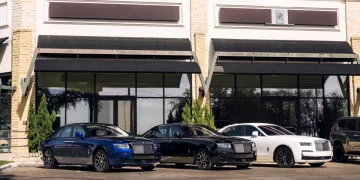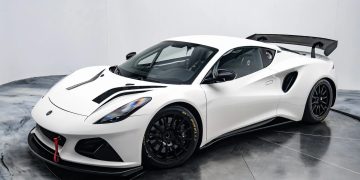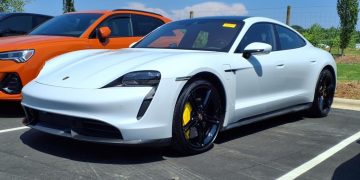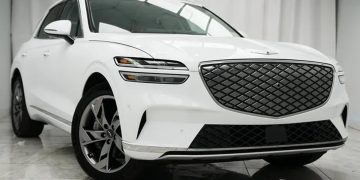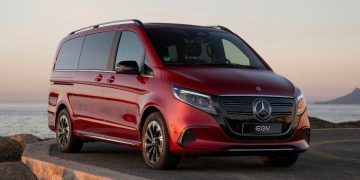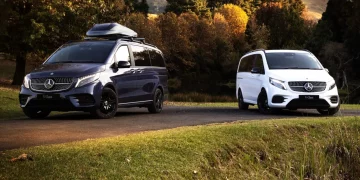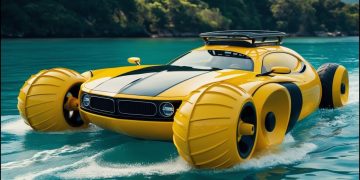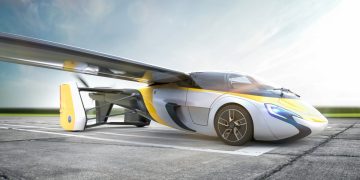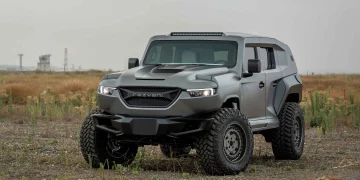When it comes to purchasing a vehicle, safety is often a top priority for most buyers. Among the various types of cars available, SUVs (Sport Utility Vehicles) and sedans are two of the most common choices. Many consumers are drawn to SUVs because of their perceived superior safety compared to sedans. But is this really the case?
In this article, we will explore the key factors that affect vehicle safety, compare the safety performance of SUVs and sedans, and break down the various features that contribute to the safety of both types of vehicles. Ultimately, we’ll determine whether an SUV’s safety truly outperforms a sedan’s, or if the perceived difference is more myth than reality.
1. SUV Safety Perception vs. Reality
The perception that SUVs are safer than sedans is widespread, and for good reason. Historically, SUVs have been marketed as rugged, sturdy vehicles that offer higher driving positions and enhanced stability. The larger size of an SUV often leads people to believe that these vehicles are more capable of handling accidents and collisions due to their size, height, and weight. However, while these factors can contribute to safety, they don’t tell the full story.
Advantages of SUVs in Terms of Safety:
- Higher Driving Position: One of the key reasons people believe SUVs are safer is because they provide a higher driving position compared to sedans. This elevated vantage point allows drivers to have a better view of the road ahead, which can improve their ability to spot potential hazards early. It also helps drivers navigate through traffic more easily, as they can see over other vehicles.
- Better Visibility: In addition to the higher driving position, SUVs typically have larger side windows and more expansive windshields, which can provide better overall visibility. This can be particularly beneficial in traffic situations, as it allows the driver to see more of their surroundings and anticipate obstacles.
- Larger Size and Weight: SUVs are generally larger and heavier than sedans, which can make them more effective at absorbing impact during a collision. In the event of an accident, a heavier vehicle is less likely to be pushed around by the forces of the crash, offering occupants a better chance of surviving with fewer injuries. The size of the vehicle also helps it absorb some of the force in a crash, which can lead to better outcomes for passengers.
- Increased Protection in Rollovers: Due to their higher ground clearance, SUVs can be more prone to rollover accidents compared to sedans. However, many modern SUVs are equipped with advanced stability control systems that help reduce the likelihood of a rollover. Furthermore, SUVs tend to have a larger safety cage around the cabin, which can help protect occupants in the event of a crash.
2. Potential Downsides to SUV Safety
While SUVs may appear safer at first glance, there are some important factors that might make sedans a safer choice in certain circumstances:
- Rollovers: Despite the higher driving position providing better visibility, the very same feature makes SUVs more prone to rollover accidents. While modern SUVs come with enhanced rollover stability features, such as electronic stability control (ESC) and anti-rollover technologies, they are still more likely to flip over than sedans. SUVs have a higher center of gravity due to their design, which makes them less stable during sharp turns or emergency maneuvers.
- Crashworthiness: Although SUVs are larger and heavier, this doesn’t always equate to better crashworthiness. Sedans are often designed with crumple zones—areas of the vehicle that are designed to absorb impact energy during a collision. The larger mass and size of an SUV may sometimes transfer more impact energy to the occupants, leading to potentially more severe consequences, depending on the type of collision.
- Pedestrian Safety: The larger front end of an SUV, combined with the higher ground clearance, can result in more serious injuries to pedestrians in the event of a collision. Since SUVs are taller and have less “give” in their structure, they can be more dangerous to pedestrians compared to sedans, which are designed with softer front-end designs that are better equipped to minimize pedestrian injuries.
3. Comparing Safety Features: How Modern Technology Plays a Role
Both SUVs and sedans benefit from the growing inclusion of advanced safety technologies. Features like adaptive cruise control, lane-keeping assist, blind-spot monitoring, and automatic emergency braking are increasingly common in both types of vehicles, which can reduce the likelihood of accidents in the first place.
Key Safety Features in Modern SUVs:
- Electronic Stability Control (ESC): ESC is standard in most modern SUVs, which helps the driver maintain control in slippery conditions or during extreme steering. ESC is particularly important for preventing rollovers, especially in taller vehicles like SUVs.
- Anti-lock Braking System (ABS): ABS helps prevent the wheels from locking up during emergency braking, which can improve vehicle stability. This is crucial in SUVs, especially since these vehicles are more prone to rolling over under heavy braking.
- Side-Impact Airbags and Curtain Airbags: These airbags are standard in both SUVs and sedans, but SUVs often have additional protection due to the larger size of the vehicle. They are typically equipped with curtain airbags that deploy along the side windows to protect passengers in the event of a side collision or rollover.
- Forward Collision Warning and Automatic Emergency Braking: These features use radar or cameras to detect an imminent collision and can apply the brakes if the driver doesn’t react in time. Both SUVs and sedans can come with these features, and they play a critical role in avoiding accidents altogether.

4. Are SUVs Safer in Real-World Crashes?
The real-world safety performance of SUVs versus sedans depends largely on the type of collision and driving conditions. Let’s break down a few key scenarios:
Front-End Collisions:
In a front-end collision, SUVs are generally safer for their occupants due to their larger size, which allows for more crumple zones and a more rigid structure. However, the impact can still be severe, especially for pedestrians or occupants in smaller vehicles.
Side-Impact Collisions:
Side impacts tend to be more dangerous for SUVs, as their higher profile makes them more prone to tipping over, especially in the case of narrow side collisions or when hit at an angle. In contrast, sedans are typically lower to the ground, which can make them more stable in a side-impact crash.
Rear-End Collisions:
In rear-end collisions, the differences between SUVs and sedans become less noticeable, since the damage usually affects the rear structure of the vehicle, which is similar in both types. Rear crash protection in modern vehicles—especially sedans—has improved significantly, with many cars now equipped with reinforced rear bumpers to protect passengers.
Rollover Risks:
SUVs are more prone to rollover accidents than sedans. In a rollover crash, the higher center of gravity of an SUV can cause the vehicle to flip over, increasing the risk of injury. Sedans, being lower to the ground, are generally less prone to rollovers and tend to offer more stable handling in emergency maneuvers.
5. Conclusion: Which Is Safer – SUV or Sedan?
The safety performance of SUVs versus sedans depends on a variety of factors, including driving conditions, crash types, and the specific safety features of each vehicle. Here’s a breakdown of the key points:
- SUVs: They offer a higher driving position, better visibility, and enhanced protection in some types of accidents, such as frontal crashes. However, they are more prone to rollovers and can be more dangerous to pedestrians. Their larger size and weight can also transfer more energy in certain types of collisions.
- Sedans: They generally have lower rollover risks, are more maneuverable in tight spaces, and tend to be more pedestrian-friendly. However, they may not provide as much protection in head-on crashes as SUVs, and their lower ground clearance can limit visibility in certain driving conditions.
Ultimately, modern technology and safety features have made both SUVs and sedans much safer than in previous generations. The decision between an SUV and a sedan should depend on personal preference, driving environment, and specific safety needs. If you frequently drive in areas with challenging weather or rough terrain, an SUV may offer you added peace of mind. If you primarily drive in urban environments or prioritize maneuverability and fuel efficiency, a sedan may be the better choice.
In the end, safety is less about the type of vehicle and more about the specific safety features and driving habits that match your needs.


